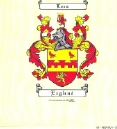
| Home | Online Genealogy |
| Reunion | Leonard Leas Will |
| My Lineage | The Leas Name |

C E N T E R
The Leas Name
leas - A meadow or sward land; a grassy field. ``Plow-torn leas.''--Shak.
Source: Webster's Revised Unabridged Dictionary
(1913) [web1913]
There is a Lees in Ashton-under-Lyne and a Leece in Barrow-in-Furness. Occasionally -- although somewhat rarely -- Lees is derived as an English Matronymic name. Names taken from the mother are pretty scarce, but in the case of Lees and Lease, some derived their name from the female given name Lece , a short form of Lettice .
Finally, some with the name Lease or Lees are descended from Scots with the surname Gillies , where the first part of the name has been lost through aphesis, when a short beginning syllable is dropped through lazy pronunciation, as in squire, derived aphetically from esquire. Gillies is a Scottish Patronymic name from the Gaelic given name Gilla Iosa (servant of Jesus).
Variations include Leese, Leece, Leish, Leishman, Leeson, Leason, Lesson , and Lisson .

Click here or on the above image for a larger view of the "Leas Crest"
I recently wrote to the Folkestone and District Family History Society in Folkstone, Kent, UK. Listed below is the response I received. It has no direct bearing on genealogy research, but it is fascinating in itself:
Thank you for your recent e-mail. "The Leas" at Folkestone is an
area on the cliff line overlooking the sea area; it is about a mile
long. In Victorian and Edwardian times it was THE place to be seen,
the best hotels and houses lined the road on the landward side of the
Leas, and the area was used for promenading, meeting your friends,
and genteel pursuits. I believe that at the time of the first world
war Polo was even played, by the officers from the local Army camp,
on one part at the Sandgate end of the Leas. When we first moved to
our house [28 years ago] an elderly lady who lived near us used to
talk of when she was a young servant in Folkestone, and how you could
not go onto the Leas unless you were dressed in your 'Sunday best'.
The area below the Leas, the Lower Sandgate Road and Harbour areas,
were for the 'lower classes', with the Pier, and Roller Coaster, etc
[long since gone].
The Leas is still there, a long grassed area, planted with flower
beds, with the Leas Cliff Hall and Bandstand. It is still a very
pleasant place to walk, but most of the hotels have been converted to
other uses and many of the large houses are no longer in sole
ownership, but converted into flats. It is still probably one of the
more expensive places to own property.
I believe that if you look Leas up in a dictionary it is a meadowland
- so maybe that is what ours was before the Victorian developers
moved in.
I hope this has been of interest to you.
Maureen Criddle
Chairman
Folkestone and District Family History Society